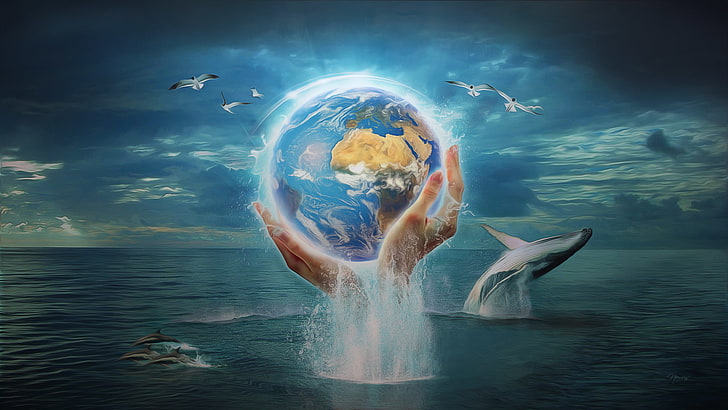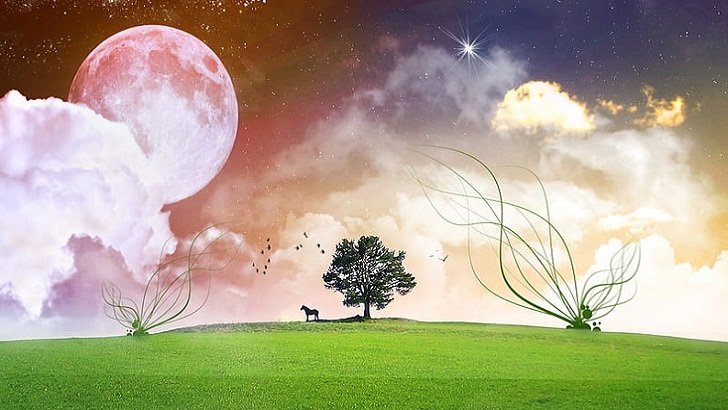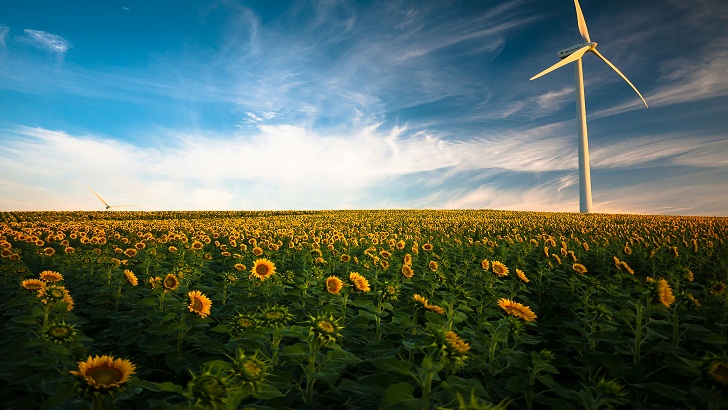
भ
BHOOMI(Earth)

ग
GAGAN(Sky)

व
VAAYU(Air)

ा
AGNI(Fire)






About Us
What does ECOFOXHUB.COM do?
ECOFOXHUB.COM #Be The Eco-LifeStyle* is an idea that started in 2022 with the mission to campaign about bioeconomy as an important role in life. The value of earth, sky, air, fire and water is to inspire individuals and communities to engage in mitigating the adverse effects of climate change and also add to climate resiliency and adaptation, protect, and preserve the health of all living beings at present and for future generations.
**** "According To My #Be The Eco-LifeStyle* Means" *** The "Stop, See, Study, Strategize, and Sustain" framework can be a useful approach to adopting an eco-lifestyle. Below is a breakdown of how this framework can be applied to promote sustainable living: 1 - ♤ Stop ♤ : - - ◇Pause Before Actions◇: Before making purchases or decisions, take a moment to consider the environmental impact. - ◇Reduce Consumption◇: Stop unnecessary consumption. Evaluate needs versus wants. - ◇Minimize Waste◇: Cut down on single-use plastics and disposable items. Shift towards reusable options. 2 - ♤ See ♤ : - - ◇Observe Your Environment◇: Take note of your surroundings and the impact of your lifestyle on the ecosystem. - ◇Recognize Your Habits◇: Identify daily routines that are harmful to the environment, such as excessive energy use or waste production. - ◇Explore Alternatives◇: Look for sustainable alternatives in your life, such as public transportation, biking, or walking instead of driving. 3 - ♤ Study ♤ : - - ◇Educate Yourself◇: Understand the principles of sustainability, renewable resources, and the carbon footprint. - ◇Research Sustainable Practices◇: Learn about eco-friendly products, organic farming, and zero-waste living. - ◇Stay Informed◇: Keep up with environmental news and trends that affect the planet. 4 - ♤ Strategize ♤ : - - ◇Reflect on Your Choices◇: Consider the consequences of your actions on the planet and future generations. - ◇Plan for Sustainability◇: Create a plan to incorporate sustainable practices into your lifestyle, such as meal planning to reduce food waste or setting energy-saving goals. - ◇Engage in Community Efforts◇: Think about how you can inspire others, participate in community clean-ups, or support local green businesses. 5 - ♤ Sustain ♤ : - - ◇Take Action◇: Implement the changes you’ve considered. This could include adopting a plant-based diet, reducing water usage, or volunteering for environmental causes. - ◇Evaluate Continuously◇: Regularly assess the impact of your actions and identify areas for improvement. - ◇Encourage Others◇: Share your journey towards an eco-lifestyle with friends and family to inspire collective action. By following this framework, individuals can make conscious choices that contribute to a healthier planet and promote sustainable living. Applying the "Stop, See, Study, Strategize, and Sustain" framework to your daily routine can help you integrate eco-friendly practices seamlessly into your life. Here's how you can do this each day: I) ♤ Stop ♤ :- - ◇Pause Your Consumption◇: - Before making any purchase, take a moment to ask yourself if it's necessary. Avoid impulse buys, especially if they involve single-use plastics or non-sustainable materials. - ◇Limit Waste Creation◇: - When disposing of waste, stop and think about whether it can be recycled, composted, or reused instead of being thrown away. II) ♤ See ♤ :- - ◇Awareness of Environment◇: - Observe the waste around you, such as plastic bottles or food packaging. Recognize how often you use non-recyclable materials. - ◇Visualize Your Impact◇: - Look at your daily routines – energy use, water consumption, and travel choices. Identify areas where you can improve. III) ♤ Study ♤ :- - ◇Educate Yourself Daily◇: - Take time to read or watch short videos on sustainable practices. Learn about the impact of different materials on the environment. - ◇Identify Eco-Friendly Alternatives◇: - Know the local resources available to you, such as recycling facilities, farmer's markets, or stores that offer zero-waste products. IV) ♤ Strategize ♤ :- - ◇Reflect on Daily Habits◇: - Consider your daily activities: How did you commute? Did you bring a reusable bag? Think about what you could adjust to lessen your impact today. - ◇Plan for the Future◇: - Think about your plans for the week ahead. How can you make more sustainable choices, like meal prepping to reduce food waste or choosing to bike instead of driving? V) ♤ Sustain ♤ :- - ◇Implement Changes◇: - Take action on the ideas generated throughout the day. Bring reusable bags, containers, or water bottles with you. Adjust your shopping list to include more sustainable products. - ◇Engage with the Community◇: - Participate in local sustainability events, such as recycling drives or community gardens, if they are happening in your area. Share your findings and changes with friends to encourage them to do the same. ₹ Example Daily Routine : - i. ♡Morning♡: - Before leaving the house, stop and check that you have your reusable shopping bags and water bottle. See how much energy you can save by turning off unnecessary lights. Know that using public transportation or biking is a more sustainable option. ii. ♡During Commute♡: - Think about the carbon footprint of your commute. If possible, choose a greener transport option today. iii. ♡Work/School♡: - Use the knowledge gained to bring a sustainable lunch, avoiding disposable packaging. Observe others' practices and think about ways to introduce sustainable habits in your workplace or school. iv. ♡Evening♡: - When cooking, see what ingredients you have to avoid waste. Know about composting scraps. Proceed by cooking creatively with leftovers rather than discarding them. v. ♡Night♡: - Reflect on your day. Think about what eco-friendly actions you took, and identify areas for improvement for tomorrow. By incorporating this framework into your daily life, you can make meaningful, sustainable changes that contribute to a healthier planet. The 5 R's of an eco-lifestyle provide a practical framework for reducing our environmental impact. Here’s an overview of how they relate to everyday life: - • (1st)Refuse: - • This is about saying "no" to unnecessary items, especially those that contribute to waste. • Examples: - • Refusing single-use plastics like straws, plastic bags, and disposable cutlery. • Avoiding products with excessive packaging. • Saying no to junk mail and promotional items. • (2nd)Reduce: - • This involves minimizing our consumption of resources. • Examples: - • Reducing energy and water usage. • Buying only what we need. • Choosing products with minimal environmental impact. • Reducing food waste. • (3rd)Reuse: - • This means finding new ways to use items instead of throwing them away. • Examples: - • Using reusable containers, water bottles, and shopping bags. • Repairing broken items instead of replacing them. • Buying second-hand goods. • (4th)Repurpose: - • This is about giving old items a new purpose. • Examples: - • Upcycling old clothes into new items. • Using glass jars for storage. • Turning old furniture into something new. • (5th)Recycle: - • This involves processing used materials into new products. • Examples: - • Properly recycling paper, plastic, glass, and metal. • Composting organic waste. • Understanding your local recycling guidelines. By incorporating these 5 R's into our daily lives, we can significantly reduce our environmental footprint and contribute to a more sustainable future. *** "According To My Intelligence" *** Ecosystem, mankind, life, and money are interrelated to each other: mankind is dependent upon "F-C-K." F - Food for Health, C - Care, K - Knowledge for Lifestyle. "S-P-I-D-E-R" is the core of Knowledge. S - Silence, P - Patience, I - Intelligence, D - Discipline, E - Education, R - Retention. "SPIDER" is obtained from self-awareness. Self-awareness comes with resources, and resources can be produced with money, and vice versa. *** "Accounting My Formula" *** ∴ Safe (E+S+A+F+W) ⇔ Safe (M) ⇔ Safe (L) ⇔ Safe (Bio) ₹E - Earth; ₹S - Sky; ₹A - Air; ₹F - Fire; ₹W - Water; ₹M - Mankind; ₹L - Life; ₹Bio - Bioeconomy. *** "Bioeconomy" *** ♧ The bioeconomy encompasses the production, utilization, and conservation of biological resources, along with related knowledge, science, technology, and innovation, to provide sustainable solutions across all economic sectors. It aims to shift away from a fossil-fuel-based economy towards one that utilizes renewable biological resources from land and sea, such as crops, forests, fish, animals, and microorganisms, to produce food, materials, and energy. Key Aspects of the Bioeconomy: • Renewable Resources: At its core, the bioeconomy relies on renewable biological resources, reducing dependence on finite fossil fuels. • Sustainability: A central goal is to foster a sustainable economic system that protects biodiversity and the environment while ensuring economic growth and social equity. • Circular Economy Principles: The bioeconomy strongly integrates the principles of a circular economy, emphasizing reuse, repair, and recycling to minimize waste and maximize resource efficiency. • Innovation and Technology: Advancements in biotechnology, genetic editing, bioprocessing, and digital technologies like AI and IoT are crucial drivers of the bioeconomy. • Cross-Sectoral Integration: It spans various sectors, including agriculture, forestry, fisheries, aquaculture, food and feed production, bio-based products (like bioplastics and textiles), bioenergy, and pharmaceuticals. Examples of the Bioeconomy in Action: • Bio-based Products: • Producing bioplastics from agricultural waste instead of petroleum-based plastics. • Using wood fibers to create sustainable packaging materials. • Developing biodegradable clothing from plant-based materials. • Creating bio-based adhesives, lubricants, and solvents. • Manufacturing construction materials and composites from bio-based resources. • Bioenergy and Biofuels: • Converting agricultural waste or used cooking oil into biodiesel for transportation. • Producing biogas through the anaerobic digestion of organic waste for heat and power. • Developing bioethanol from sources like corn or sugarcane. • Sustainable Agriculture and Food Systems: • Employing precision agriculture techniques to optimize resource use (water, fertilizers) and increase crop yields. • Using biological alternatives like biofertilizers and biopesticides. • Developing climate-resilient and nutritious crops through biotechnology. • Upcycling food waste into new products, such as using citrus peels for cosmetics or cocoa shells for fertilizer. • Producing sustainable animal feed through fermentation processes. • Biorefineries: Facilities that integrate various processes to convert biomass into a range of bioproducts, bioenergy, and biofuels, maximizing the value derived from biological resources. Examples include biorefineries producing biogas, bioplastics, and organic fertilizers from diverse biomass sources. • Biotechnology and Pharmaceuticals: • Developing new drugs and vaccines using biological processes. • Utilizing gene editing techniques for medical advancements and crop improvement. • Producing biopharmaceuticals and diagnostics. • Environmental Applications: • Using bioremediation techniques with microorganisms to clean up polluted soil and water. • Developing bio-based materials for water filtration. Benefits of the Bioeconomy: • Environmental Sustainability: Reduces reliance on fossil fuels, lowers greenhouse gas emissions, minimizes pollution, and promotes the sustainable management of natural resources. • Economic Growth and Job Creation: Creates new industries, businesses, and employment opportunities in various sectors, particularly in rural areas and emerging technology fields. • Resource Efficiency and Waste Reduction: Encourages the use of waste streams as valuable resources, promoting a circular economy and reducing landfill waste. • Improved Food Security and Nutrition: Enhances agricultural productivity, develops more nutritious crops, and explores alternative protein sources. • Energy Independence: Decreases dependence on imported fossil fuels by utilizing locally available renewable resources for energy production. • Innovation and Technological Advancement: Drives research and development in biotechnology, materials science, and other related fields. • Improved Public Health: Can lead to the development of new pharmaceuticals, diagnostics, and healthier food options. • Climate Change Mitigation and Adaptation: Offers solutions for reducing greenhouse gas emissions and building resilience in the face of climate change impacts. The bioeconomy is a dynamic and evolving field with the potential to address some of the world's most pressing challenges related to sustainability, climate change, and economic development. It requires collaboration across various sectors, investment in research and innovation, and supportive policies to realize its full potential. ♧ The bioeconomy is more integrated into our daily lives than we might immediately realize. It provides a wide array of products and services that we use regularly, often without explicitly recognizing their bio-based origins. Here are some examples of how the bioeconomy impacts our daily life: In the Products We Use: • Clothing and Textiles: Many traditional and modern textiles are bio-based. Cotton, hemp, and flax fibers are natural plant-based materials used in clothing, home furnishings, and industrial applications. Innovations are also leading to new textiles made from wood pulp (like viscose and lyocell) and even bacteria-produced dyes for more sustainable clothing. • Paper and Packaging: Paper, cardboard, and various packaging materials are derived from wood and other plant fibers. Sustainable packaging solutions are increasingly utilizing agricultural waste, like miscanthus grass, to produce bioplastics and other bio-based packaging. Even coffee capsules are now being made from corn starch and plant fibers as biodegradable alternatives to plastic and aluminum. • Furniture and Construction Materials: Wood has always been a primary material for furniture and construction. Engineered wood products and innovative materials like wood veneer helmets and insulation boards made from hemp or cellulose demonstrate the continued relevance of bio-based resources in these sectors. Researchers are also exploring mycelium (fungus) and hempcrete (hemp-based concrete) as sustainable building materials. • Cosmetics and Personal Care: Many ingredients in cosmetics and personal care products are derived from biological sources. Examples include acetone produced from fermented plant sugars in nail polish remover and palmitic acid from microorganisms and plants used in conditioners for glossy hair. Hyaluronic acid, previously extracted from rooster combs, is now often produced through microbial fermentation for beauty products. • Cleaning Products: Bio-based solvents and surfactants derived from plant oils or microbial processes are increasingly found in household and industrial cleaning products, offering more sustainable alternatives to petrochemical-based ingredients. In the Food We Consume: • Agriculture and Food Production: The bioeconomy plays a crucial role in developing drought and virus-resistant crops, reducing the need for pesticides through insect-resistant plants, and improving farming efficiency with AI and robotics. • Food Additives and Supplements: Algae are used to produce omega-3 fatty acids, a common nutritional supplement. Flavorings for food can also be derived from biomass, such as lignin converted into chemicals for smoky flavors. • Food Processing: Many food production processes rely on biological catalysts like yeast in bread making, and microorganisms in the production of wine, beer, and soy sauce. Natural dairy cultures derived from bacteria are used to extend the shelf life of dairy products. • Sustainable Animal Feed: Technologies are being developed to convert biogas into single-cell proteins for animal feed, offering a sustainable alternative to traditional feed sources. In the Energy We Use: • Biofuels: Ethanol, often produced from corn or sugarcane, is blended into gasoline. Biodiesel is made from agricultural waste and used cooking oil. The aviation industry is also exploring biofuels made from industrial waste gases. • Biogas: Organic waste, including agricultural waste and sewage, is converted into biogas for heating and electricity. Other Everyday Impacts: • Waste Management: The bioeconomy promotes the use of waste as a resource, turning food waste into new products like cosmetics or fertilizers. Technologies are being developed for edible packaging to reduce plastic waste from instant meals. • Health and Medicine: Biotechnology, a key part of the bioeconomy, is used to develop new drugs, vaccines, and diagnostics. Bioprinting technologies are even being explored for printing tissues and organs. As the bioeconomy continues to advance, we can expect to see even more bio-based products and processes becoming integrated into our daily lives, contributing to a more sustainable and circular economy. This shift aims to reduce our reliance on fossil fuels, minimize environmental impact, and create new economic opportunities.Campaign

Earth is one of eight planets that circle the star we call the sun. Together, the sun, the planets, and smaller objects such as moons make up our solar system. The four planets closest to the sun—Mercury, Venus, Earth, and Mars—are called terrestrial planets.
Read More
The sky is where, initially, the atmosphere is. Without the atmosphere, we would all suffocate within minutes. Further up in the sky is space - this is where the Sun is… without the Sun we freeze and die within days.
Read More
Earth's atmosphere is composed of about 78% nitrogen, 21% oxygen, and one percent other gases. These gases are found in atmospheric layers (troposphere, stratosphere, mesosphere, thermosphere, and exosphere) defined by unique features such as temperature and pressure.
Read More
Earth is the only planet we know of that has ever had a fire. While there may be volcanos pushing out hot magma on the surface of Venus, the hottest planet in the Solar System, there has never been a fire there.
Read More
A hydrosphere is the total amount of water on a planet. The hydrosphere includes water that is on the surface of the planet, underground, and in the air.
Read MoreEarth is our home and it is the only planet that we know of that can support human life. It has limited resources and we need to conserve them so that future generations can enjoy them. Not to mention, earth is a beautiful place and we should do everything we can to protect it.
Read Moreभगवान

"#PlanForPlanet is to work on water sanitation & conservation by removing plastic waste from natural rivulets."

"To create an Indian environment with fresh air to breathe, clean water to drink, nutritious food with no one left hungry, and a way to care for everyone's health should be the priority for you and me on this environment day,"

"In nature's economy, the currency is not money; It is life."